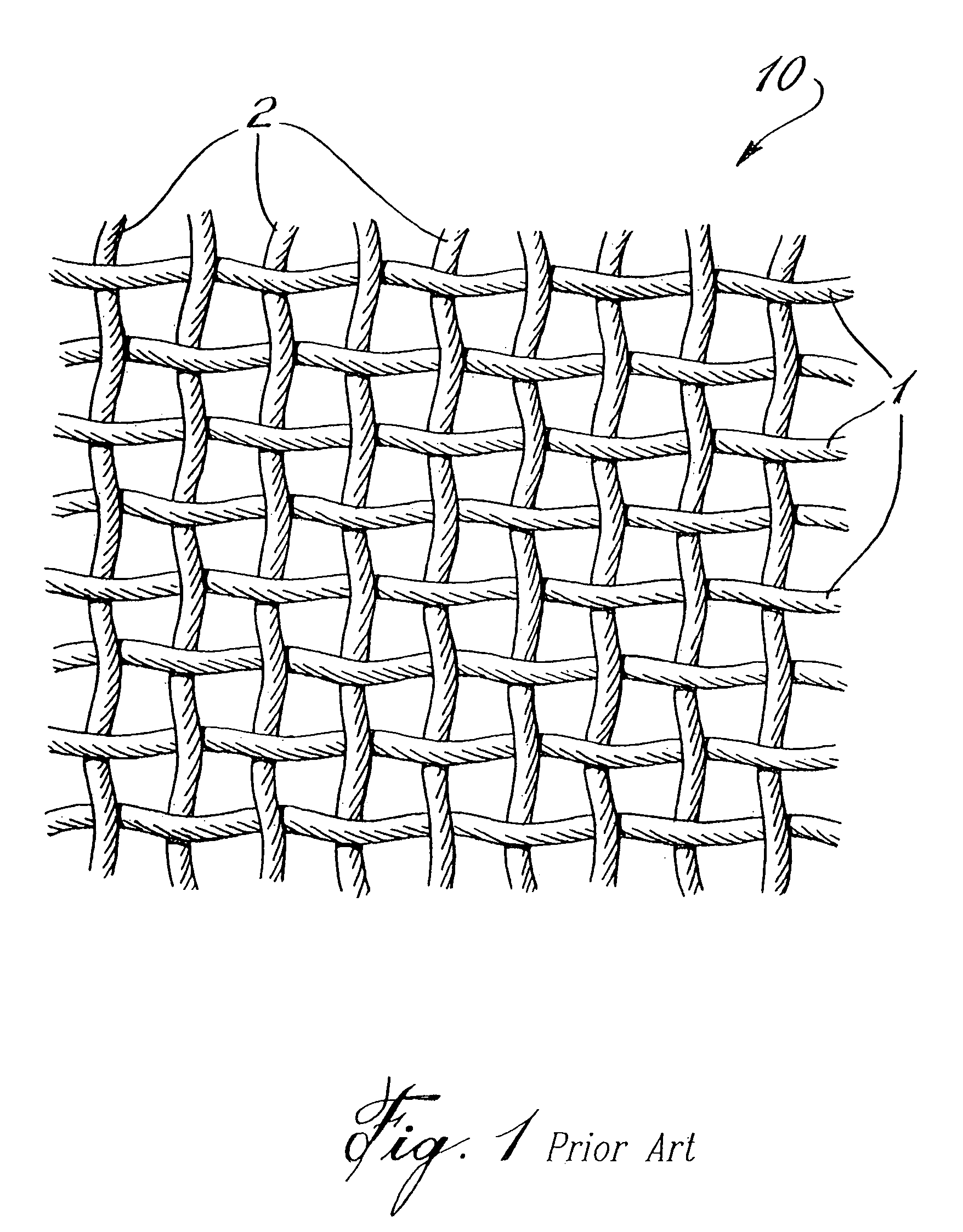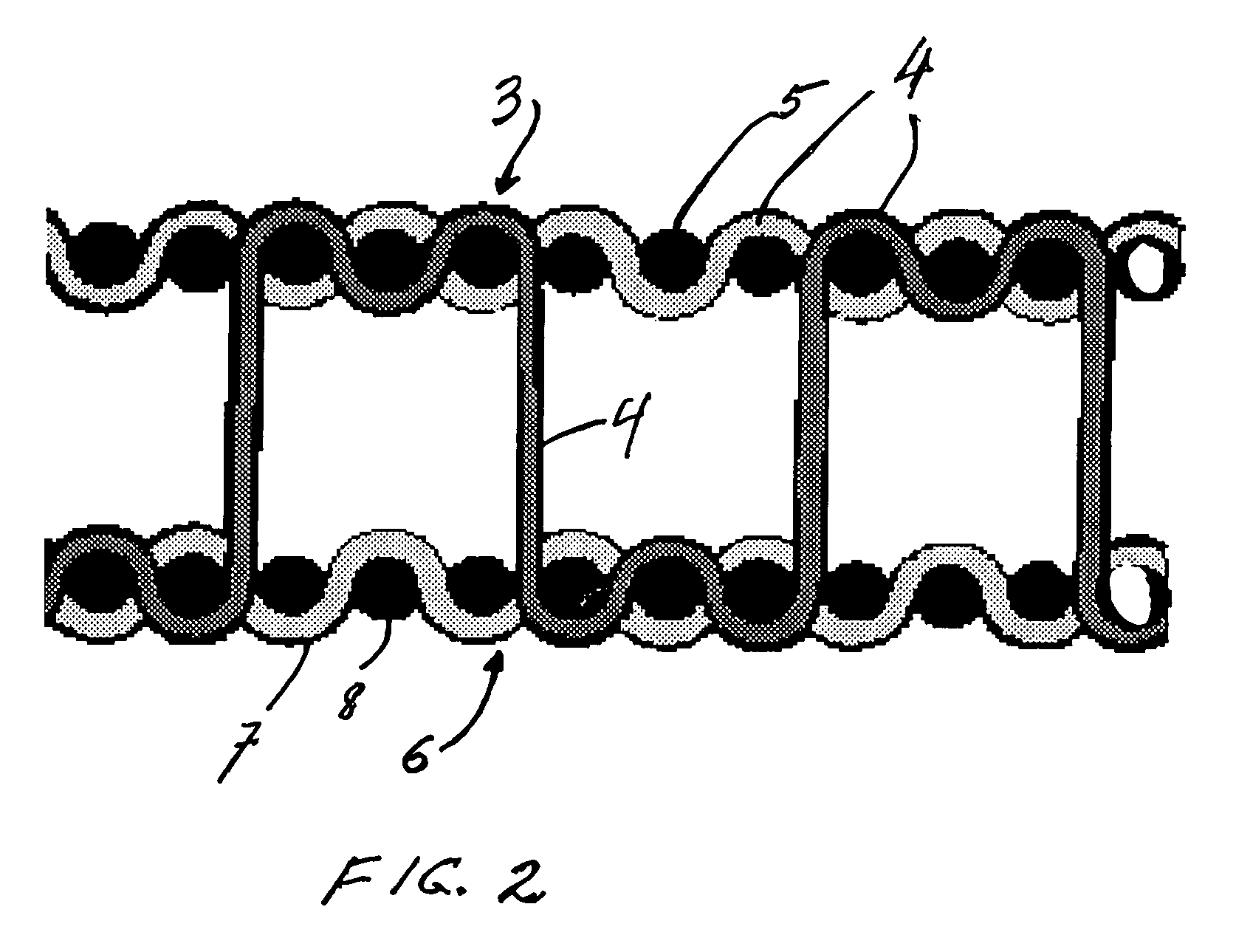Outer shell fabric for fire protective garments for firefighters and for workers exposed to risk of flash fire or electric arc
a technology for fire protection garments and outer shells, which is applied in the field of textile materials for use as the outer shell fabric of firefighter garments, can solve the problems of poor color retention poor abrasion resistance, etc., and achieves the effect of increasing abrasion, tear and uv resistance and a higher thermal protective performance rating
- Summary
- Abstract
- Description
- Claims
- Application Information
AI Technical Summary
Problems solved by technology
Method used
Image
Examples
Embodiment Construction
[0038]Referring to FIG. 1, it will be seen that in a conventional woven fabric 10, the warp yarns 2 and the weft yarns 1 are of the same type of yarns, for example spun yarns and are of the same fiber composition, such as aramid, or an intimate blend of the same fibers.
[0039]Turning now to FIG. 2 which illustrates a double weave, the upper face 3 of the double weave consists of a warp of yarns 4 and a weft of yarns 5, here both NOMEX®, wherein N NOMEX® yarns 4 are predominantly exposed on upper surface 3. Bottom surface 6, on the other hand is a warp and weft weave of yarns 7 and 8, here both KEVLAR®, wherein KEVLAR® is predominantly exposed on bottom surface 6. The two weaves constituting upper surface 3 and bottom surface 6 are interlaced as shown by means of intermittent warp yarns 4 consisting of NOMEX®.
[0040]Referring now to FIG. 3, the warp knit which is illustrated is a pillar stitch and cord stitch construction as commonly called in warp knit terminology. Warp knit yarns 11 ...
PUM
| Property | Measurement | Unit |
|---|---|---|
| temperatures | aaaaa | aaaaa |
| temperatures | aaaaa | aaaaa |
| temperatures | aaaaa | aaaaa |
Abstract
Description
Claims
Application Information
 Login to View More
Login to View More - R&D
- Intellectual Property
- Life Sciences
- Materials
- Tech Scout
- Unparalleled Data Quality
- Higher Quality Content
- 60% Fewer Hallucinations
Browse by: Latest US Patents, China's latest patents, Technical Efficacy Thesaurus, Application Domain, Technology Topic, Popular Technical Reports.
© 2025 PatSnap. All rights reserved.Legal|Privacy policy|Modern Slavery Act Transparency Statement|Sitemap|About US| Contact US: help@patsnap.com



